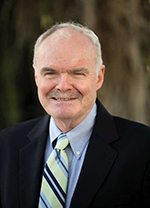Fort Lauderdale Mayor Shows Creativity
If you ignore the God-awful Manhattanizing of downtown Fort Lauderdale, in which he and all other elected officials share discredit, Fort Lauderdale Mayor Dean Trantalis is looking pretty good in there lately.
He has stepped up in the debate over whether a bridge or a tunnel should be built to end the bottleneck where the FEC Railway tracks now cross the New River on an ancient lift bridge. It disrupts busy river traffic which will only get worse as the Brightline expands and other passenger trains are introduced - something that is already happening. Trantalis favors a tunnel and has proposed a shorter, much less expensive design.
Broward County has favored the bridge, which would be enormously disruptive, and as Trantalis has pointed out, be far more expensive than published estimates, which don't include land costs and other construction such as rebuilding the elaborate new Brightline station. Nor does it consider the impact of a high bridge soaring through downtown, impacting new high rises being built near the tracks. The tunnel in contrast will cause little disruption.
More recently Trantalis has taken a position on the very controversial proposal to rebuild La Olas Blvd. in the heart of the business district, which includes removing the median which endows the section with its uniquely welcoming atmosphere.

This painting of Las Olas looking west was done by recent Florida State grad Colin Breslin, no connection to the writer except his grandson.
A little history here for the business community which is pushing for such a dramatic rebuild. Las Olas, of course, is the oldest street in the area. On it sits the first structure, the Stranahan House, now a historic site. The street was also home to the original St. Anthony Church, which likely drew more traffic than any other early structure.
The boulevard evolved slowly. Its modern character began when the elegant Riverside Hotel opened in 1936. A few years later Maus & Hoffman led a movement of fine shops from Northern Michigan to South Florida, most following the men's store to Las Olas, or near it. These events gave Las Olas its commercial character, but the street closed down after dark.
There was no good restaurant until William Maus backed Louis Flematti in opening Le Cafe de Paris in 1962.
Other restaurants came and went over the years, but it wasn't until the late 60s that the median was installed. At the same time, Wells Squier redesigned the heart of the street, with charming facades which make ground floor structures appear bigger, but there was little nightlife or entertainment. The Riverside Hotel had a dark room where the new Maus & Hoffman store now sits which featured good talent on weekends, but the nightlife we know today was still years down the road. Until fairly recent years, Commercial Boulevard, far to the north, was the place to frolic after hours.
That gradually changed during the 1980s. A big step toward the Las Olas we know today came in the late 1980s. Kitty Ryan opened O'Hara's Jazz Club next to the Riverside. It became very popular on weekends and was a hangout for press people, back when there were enough of them to justify a hangout. Its popularity led Ryan to convince the city to allow sidewalk tables. O'Hara's closed to make room for the Riverside Hotel expansion, but by then, other establishments, including the Riverside, were busy with outdoor dining. The whole movement would likely not have been possible without the shaded median that added greatly to the outdoor ambiance, by slowing traffic on the ever-busier boulevard, and made crossing from one side to the other an easy and safe process on new crosswalks.
In 2024, the nightlife has spread west with some good restaurants snuggled under the new office buildings, and traffic in the primary shopping blocks has steadily increased so that sidewalks, with tables, are often overcrowded and creating a safety problem.
From published comments and word of mouth, most residents think removing the median is a bad idea. They think it has much to do with the popularity of the boulevard. Fortunately, so does Mayor Trantalis.
The proposal to eliminate the median points out that the landscaping trees will not last much longer, and instead of replacing them, calls for widening the sidewalks and landscaping them with oak trees. Sounds nice, but will it retain the charm of the median, and will traffic speed increase without the divider, thereby negating the goal of improving pedestrian safety?
Mayor Trantalis has posed a creative solution. Noting that sidewalks on the north side of Las Olas are smaller than the south, he suggests widening only that side to relieve the more serious pedestrian congestion.
There are legitimate opinions on both sides of this issue. The opinion here is that it is risky to change what obviously works, for something that may not.
